What do you do when you don’t have the convenience of grid power ? You have to design and build an off grid power system. From my research I’ve found they can be referred to as Remote Area Power Systems (RAPS) or Stand Alone Power Systems (SAPS). This means that you have to generate and store your own power for use in your home. It also means that we have to be a lot more strict about the design of the house and what products we can have in the house. You need to know how much energy your house is going to consume under normal operations and peak load and then design your power system around these findings.
Most RAPS/SAPS use a combination of power generation systems depending on your location. Primarily solar power and wind power are used to generate the power for such installations with batteries used to store the power. Finally these systems are coupled with some kind of petrol/diesel generator in the times when the renewable sources aren’t producing enough.
The craze of late on television and in the papers have these 1.5kW and 3kW solar panel systems for a couple of thousand dollars and you might be fooled into thinking this is how much a RAPS will cost, you’d be wrong. These are grid-connected systems which feed excess power back into the grid so at night you are still using the grids power. You’ve got credit for what you’ve put back into the system hence your power bill is lowered or limited.
The biggest cost in remote systems is power storage, aka the battery bank. These are by far the biggest contributing factor to the cost of a remote system. The amount of power storage you need will depend on the weather in your area and how much power you’re consuming. Most systems that I’ve found have suggested up to a week of power storage but I find that a tad overkill for where we are. There is a lot of sun and wind on the hill is pretty good too but will this be enough to keep us going if we are to sell ourselves short and only have a day or even less worth of power stored?
We need to know exactly how much power the house will consume before we can design and build our power system. Low energy appliances are a must, gas for cooking and possibly heating. L.E.D Lighting which use a lot less power than standard lighting systems, design the house so that it doesn’t require much additional cooling.
If you want to get an idea of how much power you require a local solar/reneweable energy company website I’ve found to be quite useful is the Energy Matters website. They have a pretty cool tool that will take your postcode and look up weather related information for solar and wind and then use that to inform the kind of system you will need. They also have power calculators that take all the heavy lifting out of working all that out.
From that you can get an idea of what you need for your system and then you can start pricing things up, or you could call them. This will be one of many posts regarding the power system and my thoughts on all the different parts of such a system as I learn more about power systems and the off grid nature of being your own power station.


Comments
2 responses to “Off Grid Power Systems”
HI
A very interesting read!
I was wondering if you would be interested in our Hybrid Generator SAP.
We have managed to achieve a 70kW power output that can allow 12v 240v and 3 phase if needed. our System has multiple inputs for renewable sources but as you mentioned above it also has a diesel Genset with it. We have managed to design a genset that runs only at its most efficient (which nearly all diesel gensets dont) this helps reduce the diesel consumption. Really though our system is designed to utilise the micro renewable available on site so to reduce/eliminate the need for the diesel.
If you would like to know more about our system please dont hesitate to ask.
Kind regards
Adam
[…] or wood to heat the water and if you don’t plan this correctly, you could easily use all your generated off-grid power for the day. There are some really cool newer fireplaces that include systems to pass the heated […]